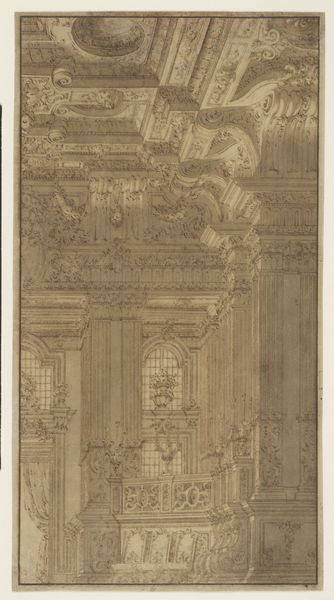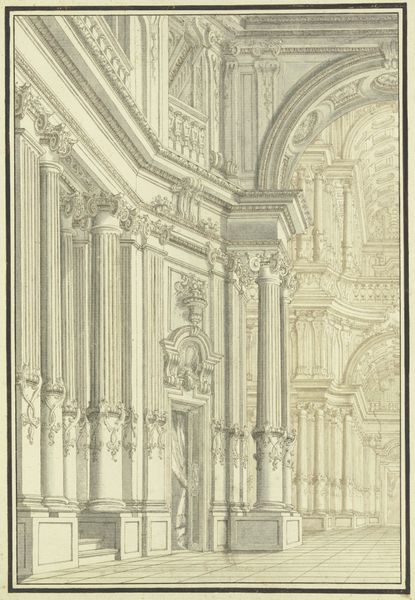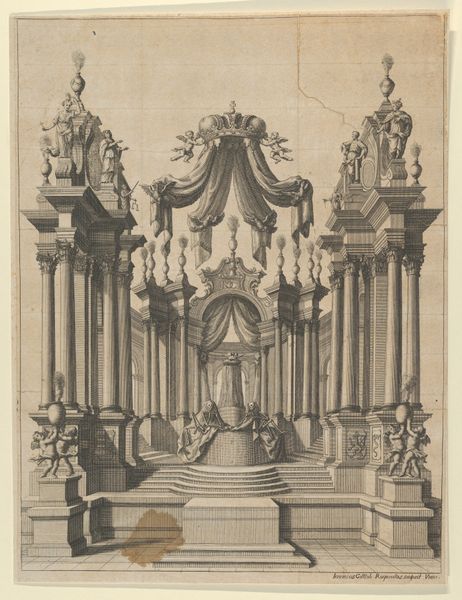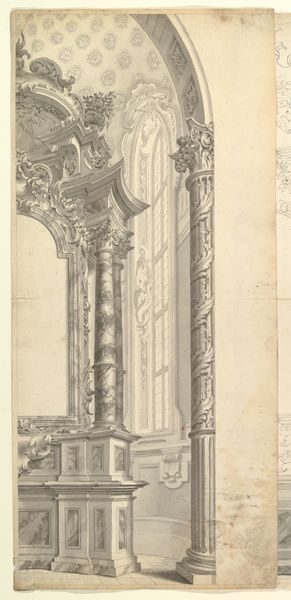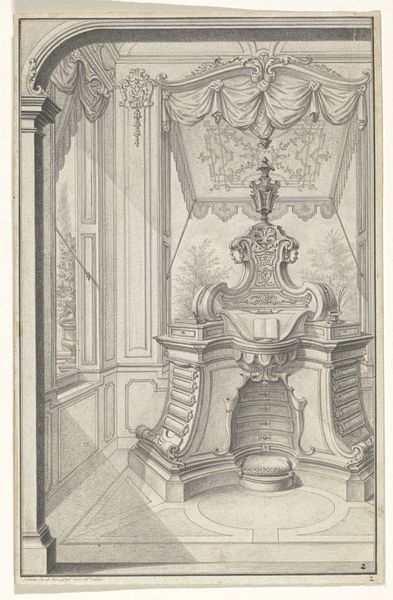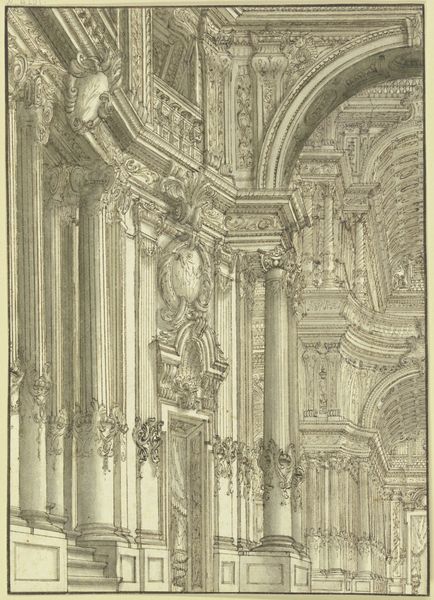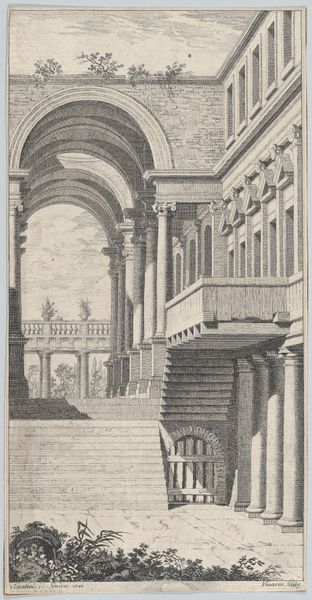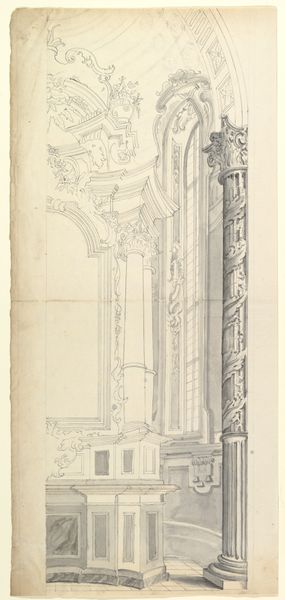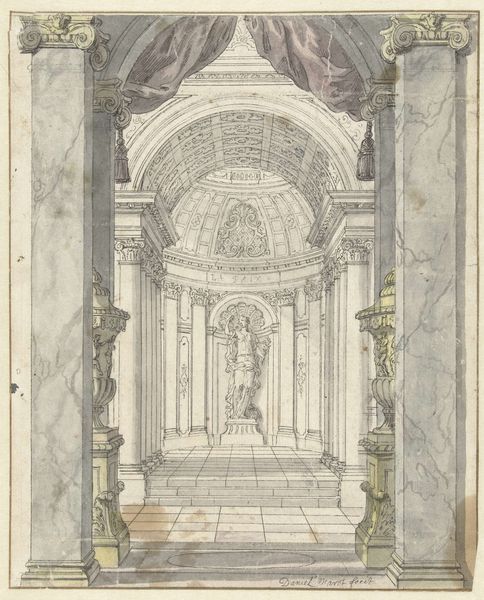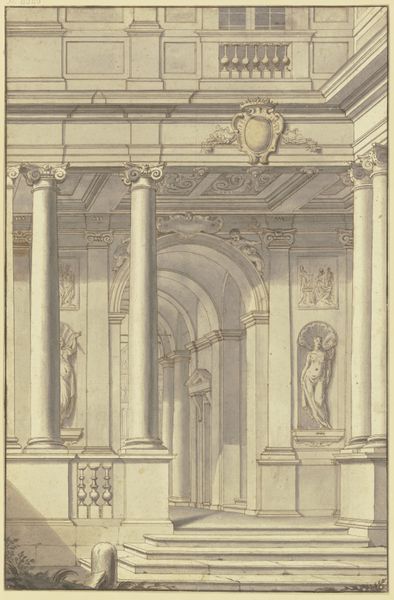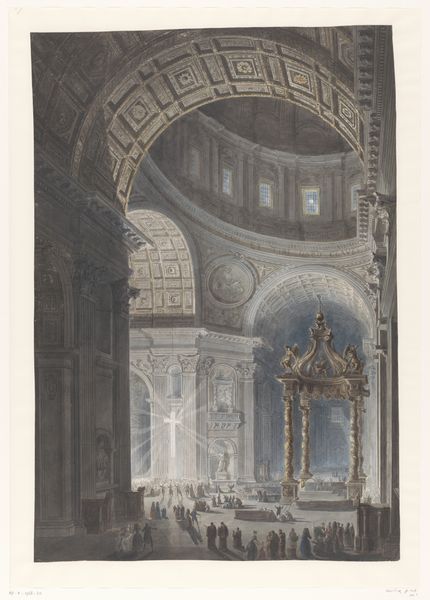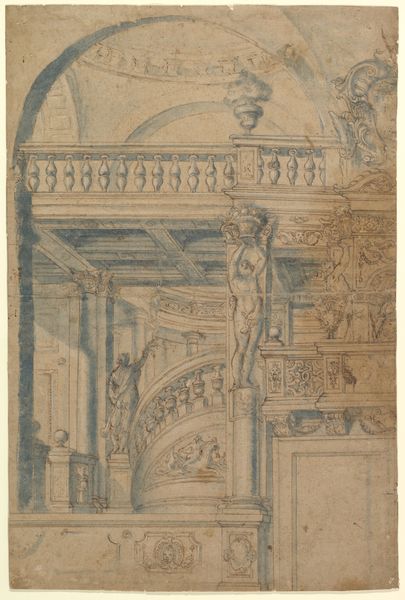
Architectural Capriccio with a Soldier and Dog c. mid 18th century
0:00
0:00
drawing, paper, ink
#
drawing
#
baroque
#
landscape
#
paper
#
ink
#
cityscape
#
academic-art
Dimensions: sheet: 47.5 × 32.8 cm (18 11/16 × 12 15/16 in.)
Copyright: National Gallery of Art: CC0 1.0
Curator: What a grand scene. This ink and paper drawing, entitled "Architectural Capriccio with a Soldier and Dog," was created by Vittorio Maria Bigari around the mid-18th century. The Baroque influence is undeniable, wouldn't you agree? Editor: Absolutely. My immediate feeling is one of austere elegance, almost a theatrical set. The classical columns receding into the distance create such depth, but the cool grey tones give it a detached, dreamlike quality. The soldier and dog feel almost incidental, swallowed by the immensity of the architecture. Curator: Indeed. These "capricci," or architectural fantasies, were very popular with collectors and patrons. They provided a way to showcase one's knowledge of classical architecture and artistic sensibility. Look closely at the columns and arches – Bigari’s rendering pays tribute to classical forms, but the slightly distorted perspective and fantastical details push it beyond pure representation. It's less about documenting reality, and more about creating a stage for it. Editor: Precisely! The architecture, even in its dreamlike state, seems to me an evocation of power. But the tiny figures of the soldier and his dog… their presence acts as a counterpoint. They're almost overwhelmed by the scale, and become symbolic of our own place within these grand historical structures: fleeting, fragile, perhaps a bit lost. The dog is a well known symbol of loyalty and service to power. Curator: A keen observation. The dog, often representing fidelity and obedience, alongside the soldier hints at the military patronage or the intended audience of this kind of work. It prompts one to reflect upon how artwork of the time reinforced socio-political structures. It also reflects back on the very system the baroque aesthetic thrived in, supported by aristocrats. Editor: So true, especially as the eye is led by these columns toward the bust, framed between arches, becoming the implied authority overlooking this space, adding a new dimension. Do you get the feeling it represents a patron who may well have commissioned this work? Curator: Potentially. Its presence undoubtedly emphasizes authority and order, crucial considerations during the Enlightenment era. Editor: I find myself quite drawn to its quiet contemplation and the way the architecture itself becomes the central subject. Thanks for sharing insights on how history, society and power intertwine. Curator: It’s an intersection I find endlessly rewarding, seeing art reflect, reinforce, and, at times, challenge prevailing social conditions.
Comments
No comments
Be the first to comment and join the conversation on the ultimate creative platform.
